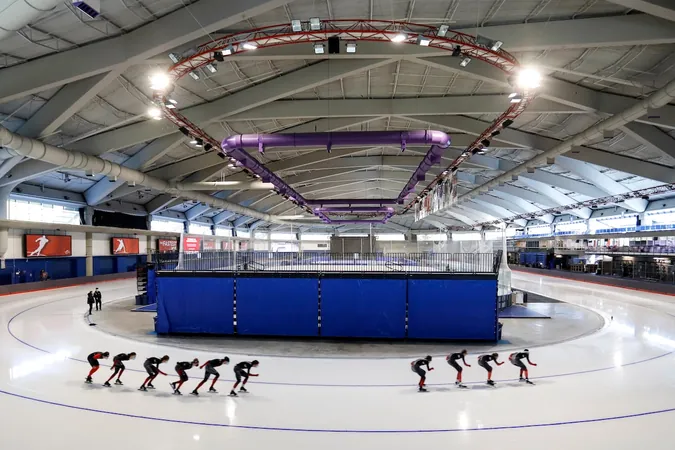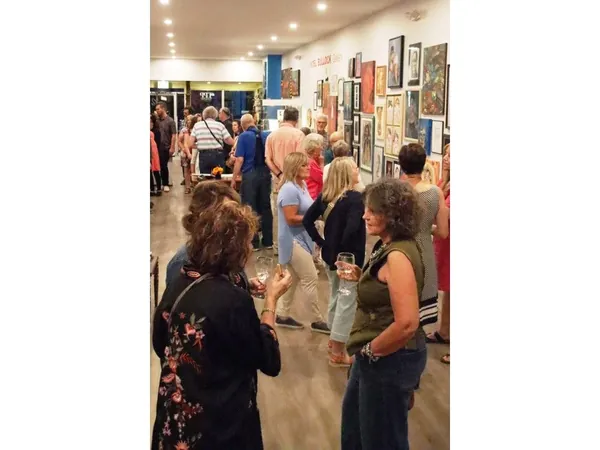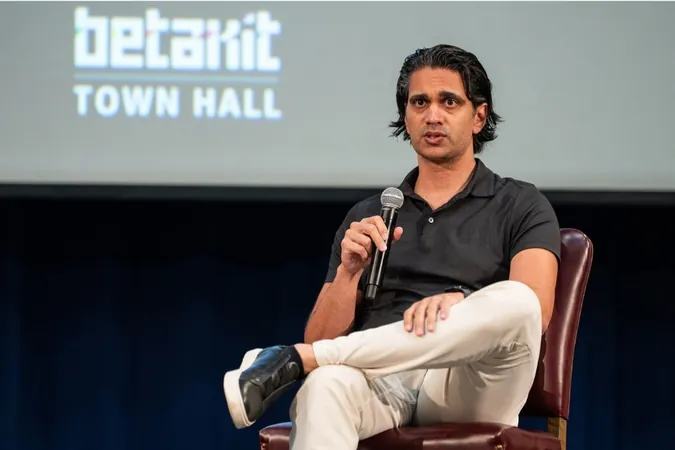
Canadian Speed Skaters in Peril: The Race Against Time at Calgary’s Olympic Oval
2025-01-21
Author: Noah
Introduction
The fastest ice in the world is teetering on the edge of uncertainty as Calgary’s Olympic Oval grapples with an impending crisis. Established as a lasting legacy of the 1988 Winter Games, this historic facility has been the breeding ground for numerous champions and has witnessed a staggering 36 Olympic medals delivered by its prodigious alumni, including icons like Catriona Le May Doan, Cindy Klassen, Clara Hughes, and Denny Morrison.
Concerns for the Future
As the Olympic Oval marks 38 years of operation, concerns are mounting over the ice-making capabilities that have defined it as one of the premier speed skating venues globally. With advancing age, the building is now suffering from increasing brine leaks among the 400 pipes that stretch under its expansive floor. Mark Messer, the Oval’s director who has been part of the facility since day one, emphasized the urgency of the situation: “We’ve done everything we can to maintain it, but the only viable solution is to replace the floor entirely. Without a proper ice-making facility, we’re not truly an ice building.”
Significance of the Venue
The significance of the Oval cannot be overstated. It is scheduled to host yet another World Cup event this weekend, continuing its proud tradition of attracting the world’s elite athletes. However, Canadian speed skaters such as Ivanie Blondin have expressed grave concerns about the ice’s durability in the lead-up to the next Winter Olympics slated for Milan-Cortina, Italy in 2026. Blondin voiced her unease, saying, 'It’s hanging on by a thread right now, and it’s an uneasy feeling for all the athletes for sure.'
Her teammate Isabelle Weidemann echoed this sentiment, expressing heartbreak over the maintenance team's struggle to keep the facility operational amid looming uncertainties: 'The thought that we might not make it to 2026 is really crushing.'
Historical Importance and Performance
The Olympic Oval’s importance extends beyond speed skating; it has also served as a training ground for several members of Canada's Olympic women’s hockey team, including legendary player Hayley Wickenheiser. With over 300 speed skating world records having been set in Calgary, the Oval has historically vied for the title of 'fastest ice' with other venues, including the newer Salt Lake City oval, which is currently winning that prestigious label.
Funding and Support Challenges
Originally constructed in 1987 on the campus of the University of Calgary at a cost of $40 million, the Oval has relied on a combination of funding sources to support its operations. Despite an annual revenue generation of about $1 million from the university, local programs, and events, the facility is in dire need of major capital investment—specifically $60 million for renovations that encompass essential upgrades to the ice plant, the running track, and improved accessibility for individuals with disabilities.
Messer stated, 'Finishing our 37th year is remarkable. We were initially designed for a 25-year lifespan, and my current priority is to keep it running for another 35.' To achieve this, Alberta’s Sports Minister Joseph Schow has been actively urging the federal government to share the renovation costs, underscoring the Oval’s significance as a cornerstone of sports infrastructure in Alberta.
Federal Support and Future Prospects
However, the provincial government has encountered hurdles in securing federal support, especially considering the Oval’s complex ownership structure, which complicates access to certain infrastructure grants. Despite these challenges, new federal Sports Minister Terry Duguid expressed a commitment to finding solutions that would enable the Oval to continue serving Canadian athletes and the broader community.
As new world-class facilities emerge elsewhere, such as Quebec City’s Centre de Glaces and others in British Columbia, the stakes for the Olympic Oval are higher than ever. The potential sale of naming rights could assist with operational costs, but Messer warns that this strategy wouldn't suffice for the extensive renovations needed to secure the Oval's future.
Conclusion
For athletes like Blondin and Weidemann, who relocated from various parts of Canada to train in Calgary, the prospect of losing their beloved venue is daunting. 'To lose the ice here would be devastating for everyone,' Blondin lamented. As the clock ticks down, the fight to save Calgary’s Olympic Oval looms large, begging the question: Will Canada’s winter sports legacy endure, or is time running out for this cherished institution?









 Brasil (PT)
Brasil (PT)
 Canada (EN)
Canada (EN)
 Chile (ES)
Chile (ES)
 Česko (CS)
Česko (CS)
 대한민국 (KO)
대한민국 (KO)
 España (ES)
España (ES)
 France (FR)
France (FR)
 Hong Kong (EN)
Hong Kong (EN)
 Italia (IT)
Italia (IT)
 日本 (JA)
日本 (JA)
 Magyarország (HU)
Magyarország (HU)
 Norge (NO)
Norge (NO)
 Polska (PL)
Polska (PL)
 Schweiz (DE)
Schweiz (DE)
 Singapore (EN)
Singapore (EN)
 Sverige (SV)
Sverige (SV)
 Suomi (FI)
Suomi (FI)
 Türkiye (TR)
Türkiye (TR)
 الإمارات العربية المتحدة (AR)
الإمارات العربية المتحدة (AR)